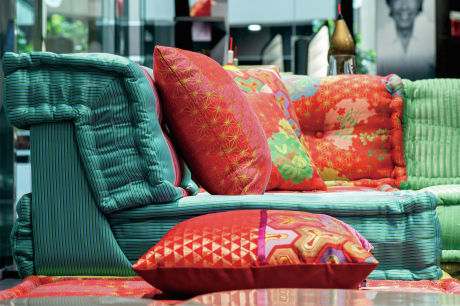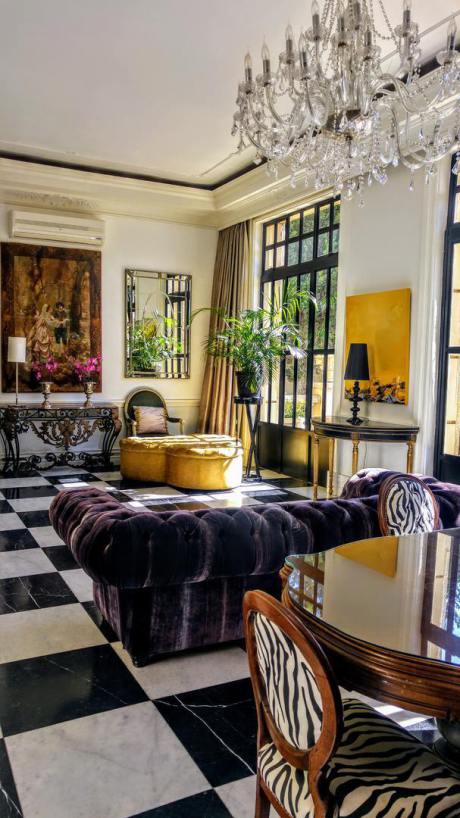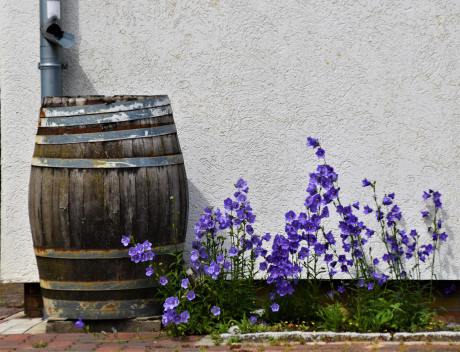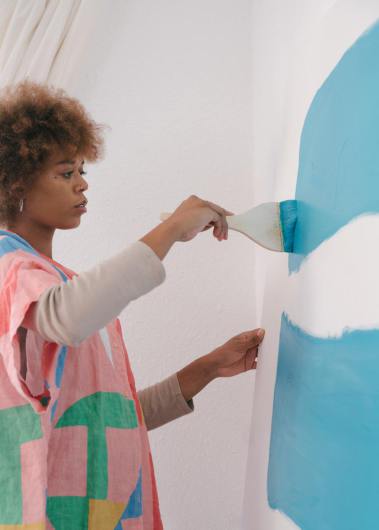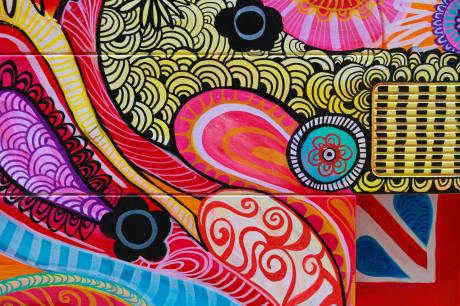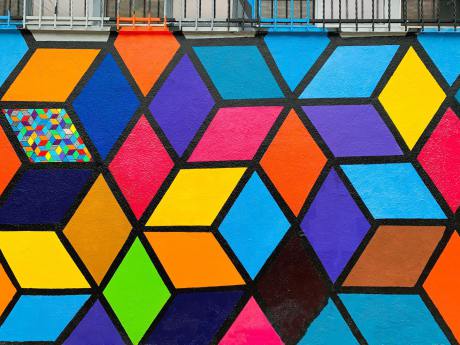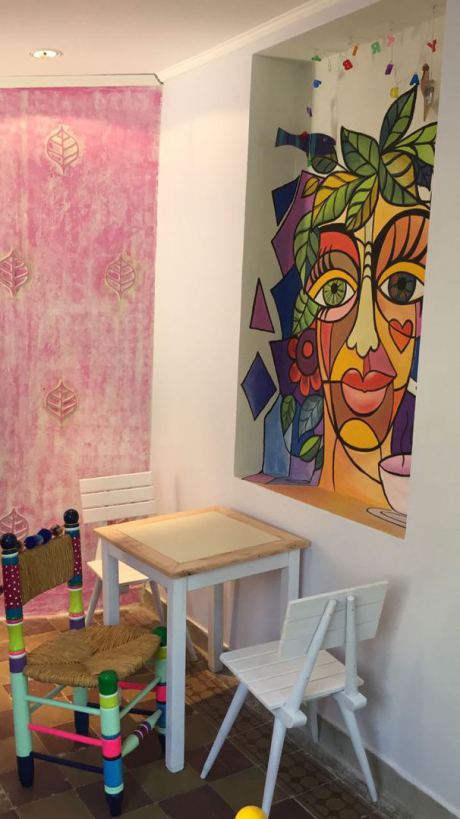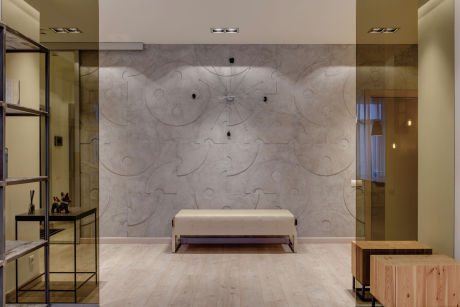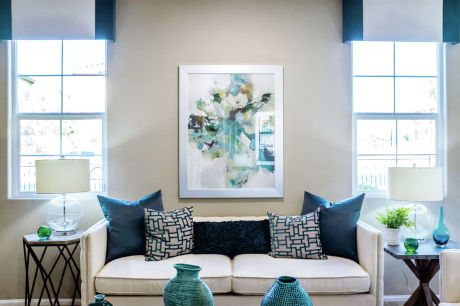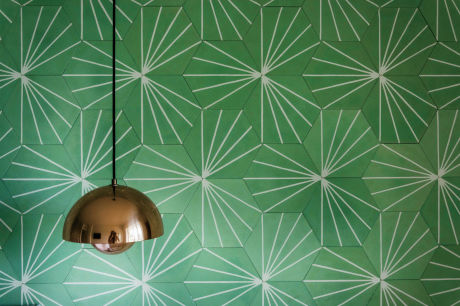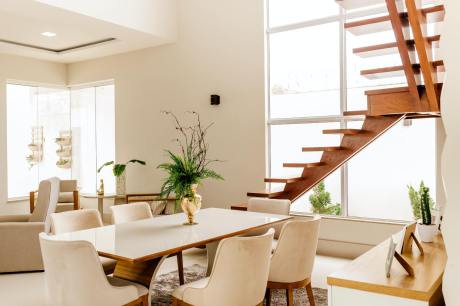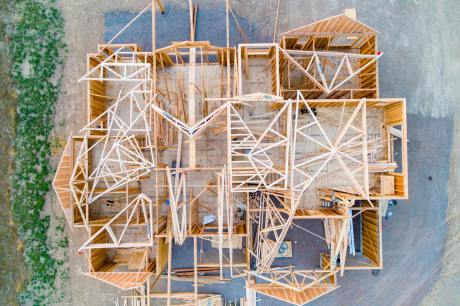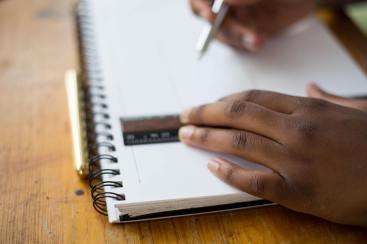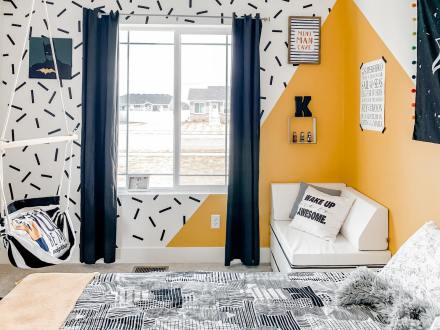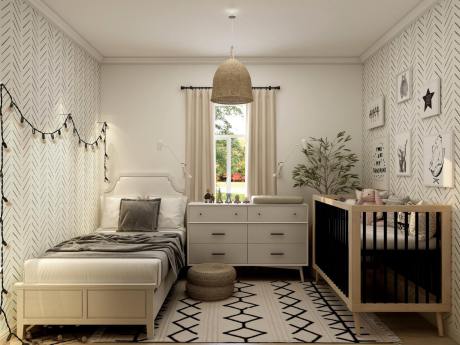Tuesday Trimmings
How to Select a Decorating Style
When trying to spruce up interior spaces so as to achieve a healthier and more aesthetically pleasing environment one of the difficult decisions is how to choose a decorating style or theme.
In this article we are going to discuss the prominent features of some of the predominant styles and trends in interior design to help identify a style that best identifies with your lifestyle choices.
Kitsch Interiors
Kitsch is a German word that's been adopted into English, meaning "worthless, trashy," or popular art. It is relatively new in terms of Interior design and is quite popular and trendy.
It is the style of freedom of choice in your design and anything goes, the more the better. Although decorating your entire house in this way can be a bit striking, you can choose to give a 'kitsch' touch to one of your rooms or create a corner that celebrates this design choice.
To achieve this there is only one rule that should guide you: there are no rules. Use impossible colour combinations when choosing fabrics and wall paint, that's why a sofa in fuchsia, cushions with an animal print pattern, yellow walls and silver chandeliers are perfectly acceptable. The combination of silk curtains, leather armchairs and faux art deco columns are the perfect mix.
Excess in the use of textures and colours are the main features and most spaces border on excess.
If you have an eclectic nature; like bright, contrasting colours and outrageous ideas then Kitsch is the style for you. It is imperative to rebel against traditional design norms and requires the combination of different styles, textures and shapes to create the signature of your living space.
Kitsch-style interiors are designed to impact and impress. They are a bold statement of aesthetics, luxury, ornate elements, decorative tapestries and a mix of retro and contemporary style. This means having flamboyant taste and requires a very audacious personality.
Ethnic Interiors
Ethnic refers to any space enriched with a native touch. The aesthetic is achieved by introducing prints and designs ascribed to a specific cultural heritage mixed with earthy toned palettes as well as furniture sourced from material and designs of the prefered region.
There are many different cultural regions to choose from, where the continents are usually grouped as a whole, but this is usually because of the ignorance of the rich cultural background of each continent and the aesthetics ascribed to each ethnic group within.
It is a style normally described as “exotic” considering the context of eurocentric designers, and can be if you base your choice of inspiration on Asian, Native American, middle eastern or other regions outside of Africa.
Considering the variety of cultural sources of inspiration it is necessary to have a reasonable guide to the elements you want to incorporate in your interior and to be sure that they all pertain to the same regional source.
To achieve this style there are a couple of rules that should guide you:
The colour palette combinations are usually earth tones; which include browns, beige, brick red, terracotta, ochre, warm grays, shades of green, brown oranges, burnt sienna, whites, and some gray blues these are natural colors found in dirt, moss, trees and rocks.
When choosing fabrics and accessories incorporate bold prints as well as the statement pieces and furniture that represent the specific region you have chosen.
Natural is usually the look you are going for, wooden furniture, artesanal design and handmade tapestry help to give your interior an authentic look.
It is best not to go overboard with the pieces of decoration and prints and keep a minimal effect throughout the space you are designing.
Enviromentaly Friendly Homes
Scientists have been warning us over the last decade or more that global warming and climate change are important factors that we should take into account in our daily lives; This not only applies to recycling plastic water bottles or using led light bulbs. There needs to be a fundamental change in the way we live.
One of these changes has to be in the way we build our homes and cities, designing them in such a way that saves as much energy and water as possible.
This will require sophisticated technology as well as money, and will have an impact on houses that have already been built.
So how do we reduce the environmental damage that our homes produce? Here are a few ideas that are easily accomplished.
Reuse and recycle rainwater : Collect rainwater using barrels, containers, kegs etc. attached to your drain pipes. This can be used to water plants, wash cars, for house cleaning and reduces the amount of clean pipe water that we use daily.
Plant a vegetable and/or flower garden: Vegetable and flower gardens add to the green areas available in your city and help to improve air quality as well as providing fresh vegetables that you can use in your own kitchen. If you don't have space land available you can start a vertical garden using your balcony, roof and window sills to hang and place flower pots.
Compost for your garden: Household waste is a significant part of urban waste that contributes to greenhouse gases. Using vegetable scraps, used coffee grains, eggshells etc in your compost reduces the amount of rubbish that you throw out and makes perfect fertilizer for your plants.
Plant trees around your house: trees reduce heat from asphalt, cement and concrete by up to 12°C by shading our homes and streets as well as releasing water vapor into the air through their leaves. They also produce oxygen and reduce the CO2 that can be found in the air.
There are many other ways you can reduce your carbon footprint, and although it may be hard to comply with all of the suggestions available, every little action that we can implement will help us and our planet heal.
Painting a Mural
Although installing wallpaper murals may be easier, painting your own walls has a special charm and gives one a sense of accomplishment and pride.
If you want to try out a mural project here are a few things you should take into account to help you on your way.
First of all consider your space; are you painting inside or outside? is it a bedroom wall or a kitchen?
Depending on the location you may need to choose a more playful colour palette or something more sedate. You would also have to consider your paint options because you will need a different type of paint depending on whether you are painting indoors or outdoors.
Once your wall has been chosen you need to take measurements of the wall and make a sketch of your design to scale. Scale up the measurements of your wall to the sketch, for example one meter on your wall can equal 10 centimeters on your sketch, this will help you transfer your drawings on to the wall once you finish. If it's your first time painting or drawing, try to make your mural as simple as possible; you can try painting diagonal lines, abstract figures, simple flowers or geometric shapes.
Now you have to choose the colours for your mural; first of all try to colour them onto your sketch to see how they look. You should also take into account the colour of the other walls in the room that you are painting as well as the furniture, accessories and linen as combining them with the colours on your mural will have a more harmonic effect.
Next you need to prep your wall, this entails making it ready to paint your mural. If the wall is in bad shape you may need to hire someone to fix cracks and take out nails and screws you may also need to sand it down and paint it white if it's original color is very dark because this may affect the new colours that you've chosen for your mural.
Use a pencil or chalk to trace your sketch onto the wall. First you may need to draw a grid so it's easier to transfer your drawing exactly as it appears in the sketch. Use a hard pencil H or 2H and don't press down too hard; this makes it easier to erase or paint over the pencil marks once you finish.
Finally you're ready to paint.
Make sure you have everything you need when you are ready to start. You will need different sized brushes, all the paint colours you need for the mural in the quantities that you need, paint thinner, coverings for floors and surroundings, masking tape to protect ceiling and edges and empty containers to mix paint and clean paint brushes. Use different types of paint brushes according to the amount of detail you need to achieve; for very detailed drawings use a smaller paint brush and for filling in blank spaces a wider brush is helpful.
Good luck!
FIVE IDEAS FOR DECORATING YOUR BLANK WALL
One could say that decorating a house is what transforms it into a home and one of the challenges of a great interior are the walls of your home.
The blank walls of your house are canvases that can completely transform your interiors. These days the range of available colours and coatings is so extensive that there is little room for boredom. However, once your walls are painted they remain blank spaces that require intervention.
In this article we will explore just a few trends that can transform a blank wall into a conversation piece.
Repetitive Exhibition
One of the simplest ideas is to transform your wall into an exhibition display. By simply creating a grid composition on the wall using framed family pictures, paintings, mirrors or even collection pieces to make a very entertaining and fun wall to look at. If you are a traditionalist at heart you can keep it simple, using the same colour palette and placing your frames symmetrically or you might take a riskier route and mix and match placements, colours and the objects on display to make a more flamboyant look
A Statement piece
A generously sized wall sculpture, piece of decor or painting that stands out while matching the rest of your decoration elements may be all that a blank wall needs to exude harmony. With the proper lighting, it’s contrasting effect against the blank wall will be striking as well as appealing.
Wallpaper or Vinyl
These days with easier access to printers and the sheer availability of brilliant designs a great choice in wall paper or a cool vinyl plot can transform a blank wall into a tropical paradise or a fun children’s story book. The variety of paper and design is limited only by your imagination.
Texture
It is not always necessary to add elements to a wall in order to decorate it. An interesting option is when the wall covering provides texture and becomes the decoration in itself. Using brick, wood, stone and some tiles a textured result can be achieved and the visual effect will be extremely striking.
Murals
Although murals require contact with a good mural painter and thus are not as easy to attain as the other decorating idea mentioned in this piece, a great mural makes your home decor totally unique, giving it an exclusive personality and making the wall decoration a magnet for the eyes and your home a bespoke experience.
Why Hire an Architect
When planning your grand design be it building your dream home, extending your current home, or even designing an office space there are multiple professionals you will need to achieve your goals.
We probably all know that architects provide the technical drawings needed for the construction process but there are many things to consider when undergoing a construction project.
Here are just a few that highlight why an architect is indispensable to your construction project;
- Your architect will work with you to develop an exclusive and original design that incorporate; working with your ideas and vision so as to adapt each element of the project to your personal tastes, achieving a custom-built and personalized project.
- The architect has first-hand knowledge of building regulations, procedures and requirements. It is their job to procure licenses, permits and/or insurance if necessary. This is particularly important in the Diaspora where building regulations can be much stricter than they are in Nigeria.
- An architect can also help obtain aid or subsidies that may be available during this process.
- It’s an architect’s job to take into account site utilities and natural conditions such as topography, sun light, cross ventilation, site views, etc.
- Architects have an informed view of the construction market, so there is no one better suited to advise you on materials, finishes, structural and decorative solutions. They may also have better access to discounts and special offers only available to professionals.
- Having a work plan and outlining your project are important to prevent budget deviations. Your architect will manage work progress and control expenditure.
- An architect will also help hire other professionals that you may need; such as a Quantity surveyor, Structural engineer, Interior designer, etc.
- Finally, in addition to the technical drawings they also provide 3D visuals of the finished product. These will come in handy if you ever need to renovate, expand or sell your building.
Essentially if you're embarking on a construction project, deciding to build a house or just want to renovate your living room, choosing an architect can save you time, money, and trouble.
Five decorating tips for your child’s bedroom.
Decorating a room usually requires some initial planning to help you make the most of your space without losing precious metres along the way. Here is a quick guide to designing your space and have fun along the way.
Understand your space
The first thing you will have to consider when you decide to decorate your child's room are its dimensions. The length and width of a room will be determining factors in helping to decide the size and distribution of your furniture. Ignoring this can result in costly choices as you may end up with furniture that are a poor fit or misplaced. Measure, plan and think about the items you need in the room so that you start off on the right footing.
Choose a theme
If colour will feature prominently in the décor then it is helpful to have a theme as this can make decorating easier and fun.
A theme will also help you plan accessory choices as well as help you decide on bedding and furniture. Remember not to overwhelm the room with baby themes as children grow fast and frequently change their interests.
The ideal way to incorporate a theme is to do so in the details like fabric and accessories while keeping a classic style for more permanent pieces like furniture and lighting. This will mean you can easily redecorate a room as your child grows.
Colour combinations
Once you have decided on a main colour, take a few minutes to learn the colour wheel theory, this will help you determine which complimentary colours to use as well as analogous colours, cold or warm colours, monotone chromatic or monotone achromatic combinations for your colour theme. (More info will be available on the 'Colour Wheel Theory' article on our pages).
Properly distributing colours when decorating a bedroom will ensure the end result is harmonious and comfortable atmosphere. This is best achieved using the 60-30-10 rule which as the name suggests, involves using 3 colours in a room with each number representing the percentage in which each colour should be present in the room.
|
Use your natural light.
Natural light in any corner of the house is indispensable for decorating any room, especially a bedroom.
Sunlight is fundamental to well being; exposure to sunlight is thought to increase the brain's release of a hormone called serotonin. Serotonin is associated with boosting your mood and helping you feel calm and focused.
If you don't have as much natural light as you would like, you can enhance the light you have by using light fabrics for curtains, surround the room with light colours (especially white) and with the use of small pieces of furniture.
Cheap is expensive
When buying furniture, linen, art or any decorating accessory, consider the adage "Good quality is cheap; it's poor quality that is expensive" which is almost always true. If you start out with a small budget then prioritize what you need and if necessary, reuse or recycle what you already have. The idea is to transform items with a coat of paint using bright colours (that harmonise with the rest of the room's décor) and combine them with new accessories.
Good quality furniture can be recycled or restored in the future, making them more of an investment than an expense. Beware though, not everything that is expensive is of a good quality and accessible prices.
Extra tip: Get professional help
Professional interior designers or architects are specifically trained to understand and translate your needs into a harmonious space.
They will also provide original ideas that will ensure that the room you are designing is as comfortable as it is unique.
They also have professional contacts within the trade who can source décor to fit your theme and in many cases may reduce your overall costs by avoiding substandard décor or workmanship. |



